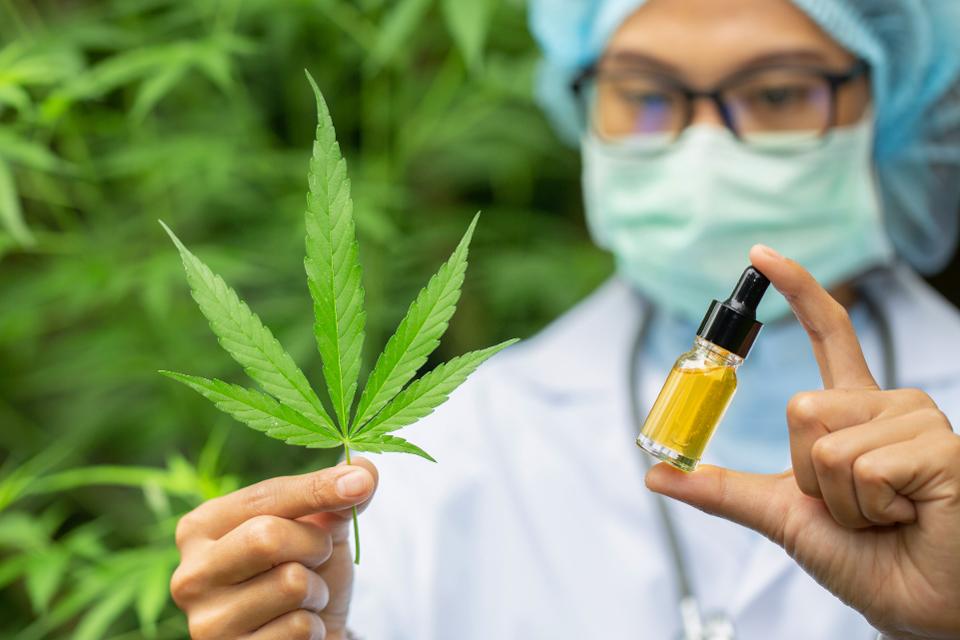
Cannabidiol, or CBD, is an oil extracted from the different varieties of the cannabis plant and it has become steadily more popular as a potential health remedy, to the point that millions of people are at least familiar with it.
One of the areas of maximum interest for the use of CBD is pain treatment. Where many people are especially interested in using CBD is in treating difficult, often chronic pain that they haven’t easily been able to manage with other remedies.
While research on just how well CBD can help relieve difficult pain is still ongoing in the clinical community, there have been results that look promising. Interesting new CBD-derived products of all kinds have also appeared on the market to give consumers more choices. Let’s have a look at what the evidence shows and what’s available for you as a buyer looking for relief.
What is CBD and What Does it Come From?

Cannabidiol is just one of many cannabinoid compounds that naturally occur in the cannabis plant and can be extracted from it. The existing fame of cannabis and its most famous compound THC for recreational use and in the management of both physical and psychological ailments in people has also prompted a great deal of research into the use of CBD.
Unlike THC (also called tetrahydrocannabinol), CBD doesn’t produce narcotic effects of any kind. It can be consumed without worrying about unplanned mind-altering sensations shortly afterwards. However, there is a mounting body of evidence showing that CBD does indeed produce other types of changes in the body and that these may be beneficial in numerous non-recreational, health-related ways. This is where research into CBD’s medical properties has been directed.
How CBD Works
The human body contains what is called an endocannabinoid system, with its complex actions in our immune system, nervous system, and all of the body’s organs, is literally a bridge between body and mind. Also, we can say that the endocannabinoid system (ECS) is essentially a vast network of neurotransmitters that bind to cannabinoid receptors, and cannabinoid receptor proteins. This is the very basic explanation for why CBD produces reactions with the human body in certain highly specific ways.
More specifically, the two types of cannabinoid receptors in the human body are called CB1 receptors and CB2 receptors:

- CB1 receptors affect aspects of physiology such as movement, pain response, emotions, mood, thought processes and appetite. The CB1 receptors are primarily located on nerve cells in the brain, spinal cord, but they are also found in some peripheral organs and tissues such as the spleen, white blood cells, endocrine gland and parts of the reproductive, gastrointestinal and urinary tracts.
- CB2 receptors tie into the immune system and affect both pain and inflammation. The CB2 receptors are mainly found on white blood cells, in the tonsils and in the spleen.
Because CBD attaches to and can stimulate both of these receptors, it’s capable of causing the body to produce its own cannabinoids, which in turn could possibly alleviate disorders relating to the physiological processes that these receptors help manage.
In a nutshell, the above is how CBD works and why there’s so much genuine medical interest in how much it might help with pain and other conditions.
Possible Health Benefits of CBD According to Science
The possible benefits of CBD don’t just extend to whether it can relieve pain or not. Those handy CB1 and CB2 receptors that CBD binds to are so diversely important in stimulating the body that fairly recent clinical studies have shown many other possible reasons for consuming it. CBD’s binding with these receptors could possibly be useful for helping people regulate problems relating to any of the following conditions:
- Anxiety and depression
- Sleep problems
- Migraines
- Other types of headaches
- PTSD (post traumatic stress disorder)
- Nausea
- Symptoms associated with cancer
- Certain allergies
- Epileptic disorders and seizures
- Movement disorders
The Pain Relief and Anti-inflammatory Potential of CBD

For our purposes here, the possible pain relief properties of CBD are particularly interesting, and there’s considerable evidence indicating that this compound is capable of providing relief for difficult cases of pain treatment. One study has indicated that cannabinoids like CBD might cause relief from inflammatory and neuropathic pain disorders.
Older studies have also heavily investigated cannabinoid mechanisms in the human body for their potential for providing relief from chronic pain in many different forms. What the evidence across numerous studies has shown so far is that CBD has strong potential when it comes to treating several types of pain that aren’t easily or safely treated with common pharmaceutical remedies.
This is why CBD remedies such as treatments for arthritis, muscle ache treatments, CBD oil for pain and other products have become highly available for consumers.
Is CBD Legal?
The legality of CBD varies from one country to another, with many western countries having legalized it completely while other states continue to forbid buying or selling CBD in any form. In the United States however, products made with CBD extract are now legal and have been since 2018. The FDA applies certain restrictions on how CBD can be advertised and sold, but buyers of CBD products are not breaking any law.
How to Obtain CBD
CBD has become extremely popular in recent years for its reported medicinal properties. As a result, quality production of CBD-based oils, droplets, creams, extracts and other presentations has also become highly refined. Retailers such as CBD ReTHink sell a wide range of possible CBD relief products for users with all kinds of preferences and personal health problems.
















